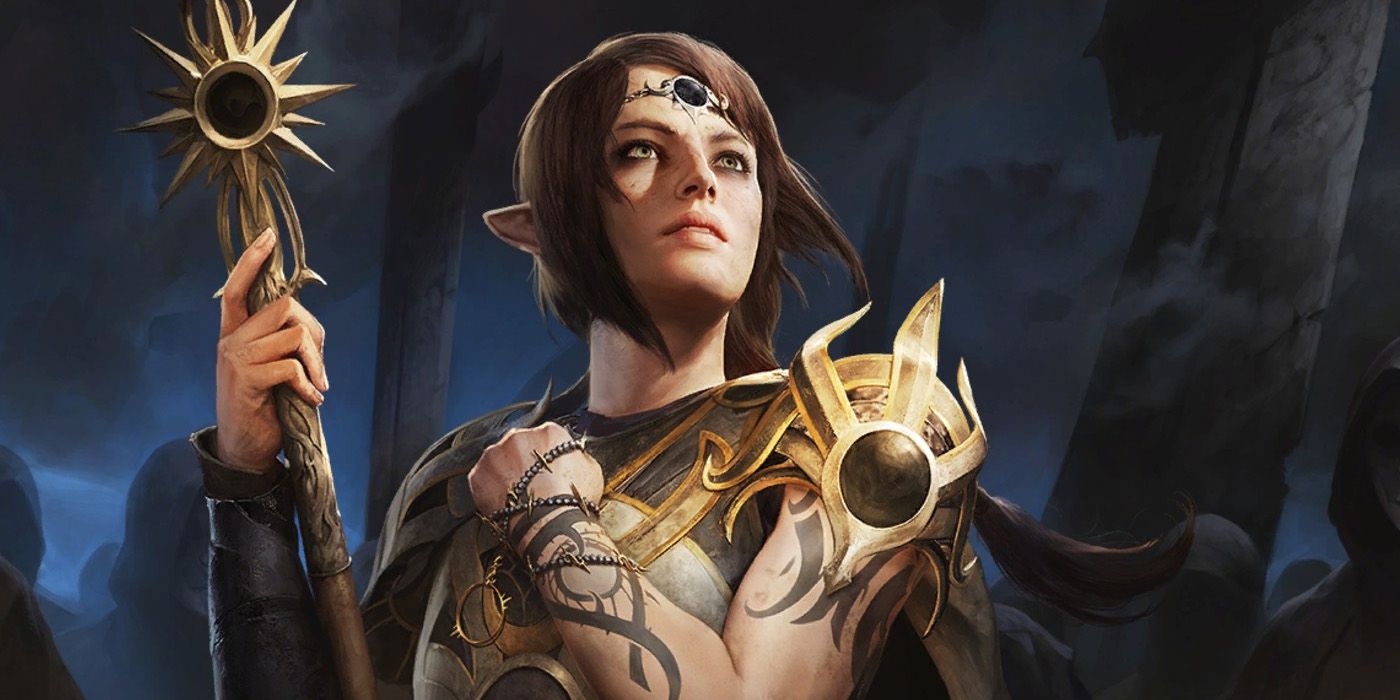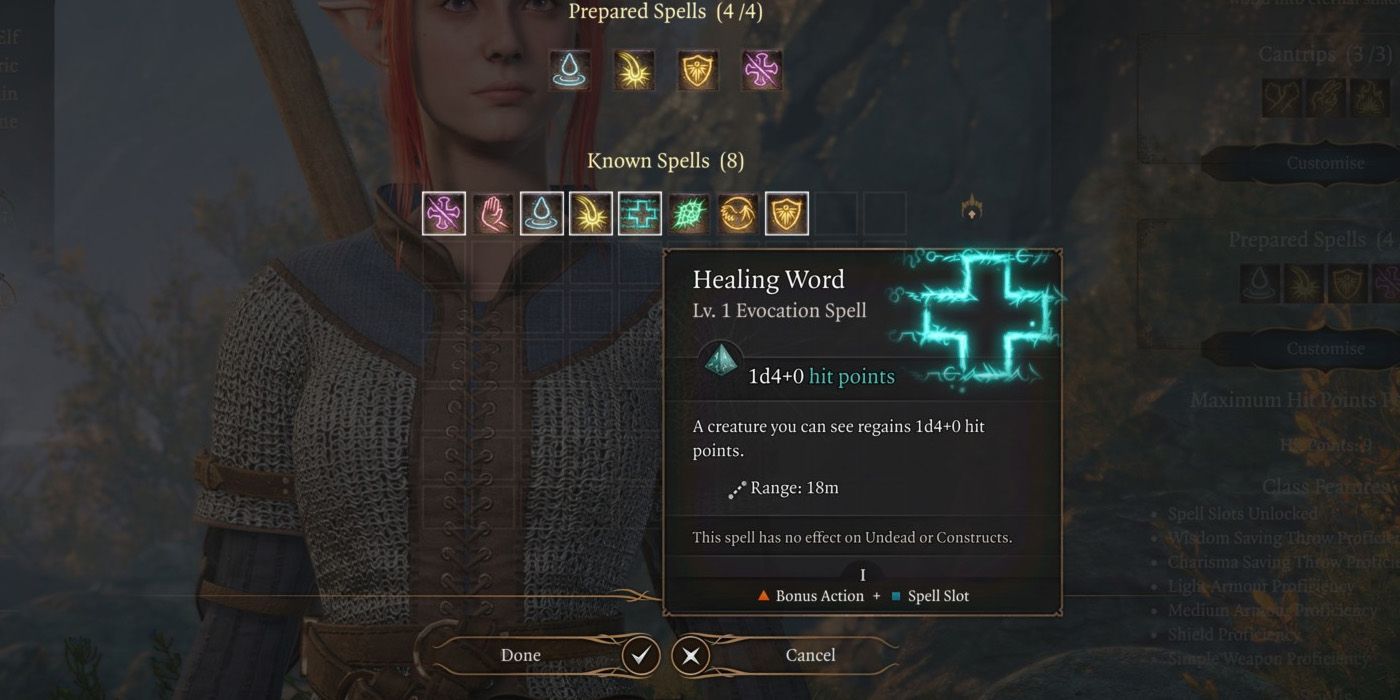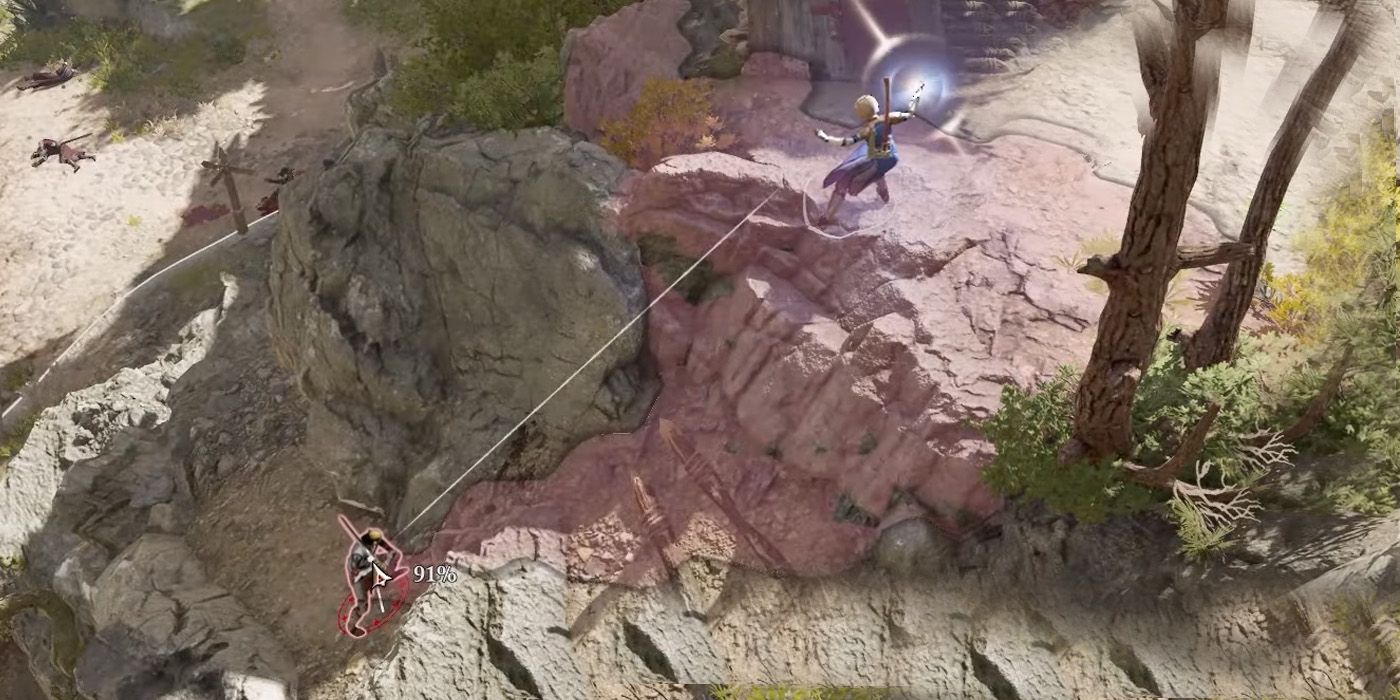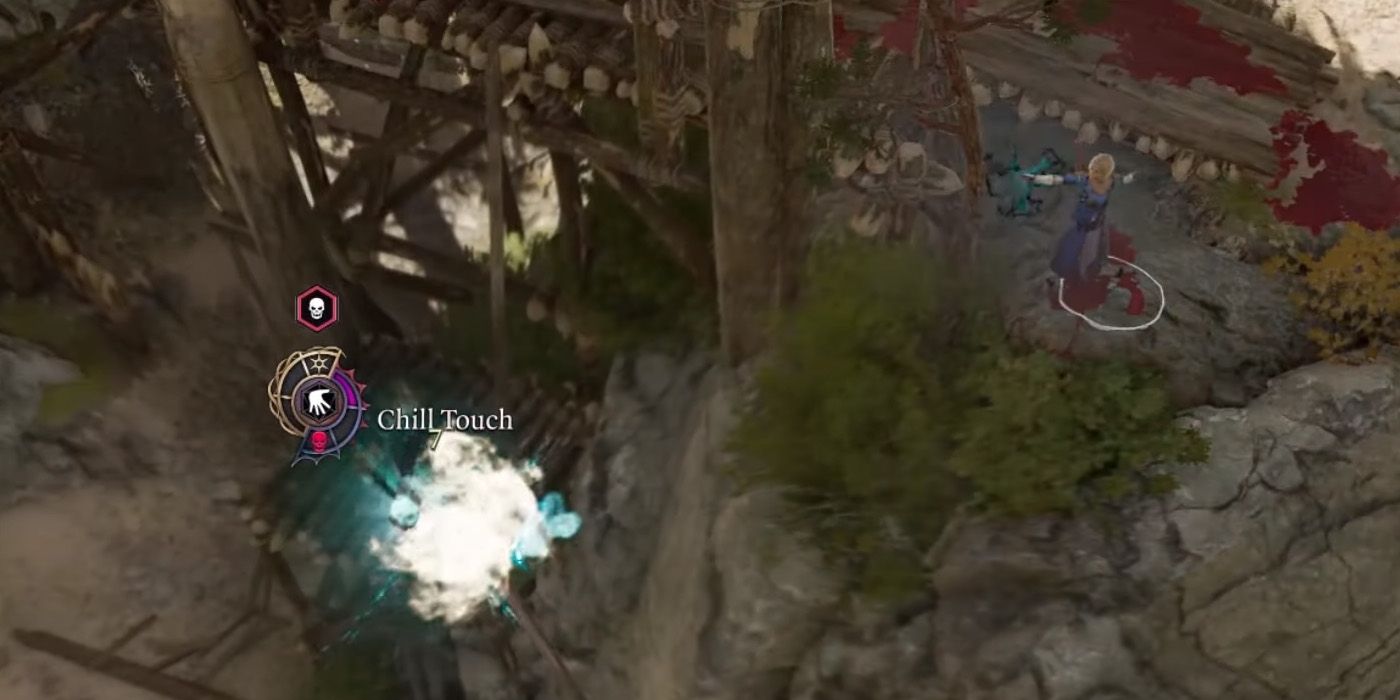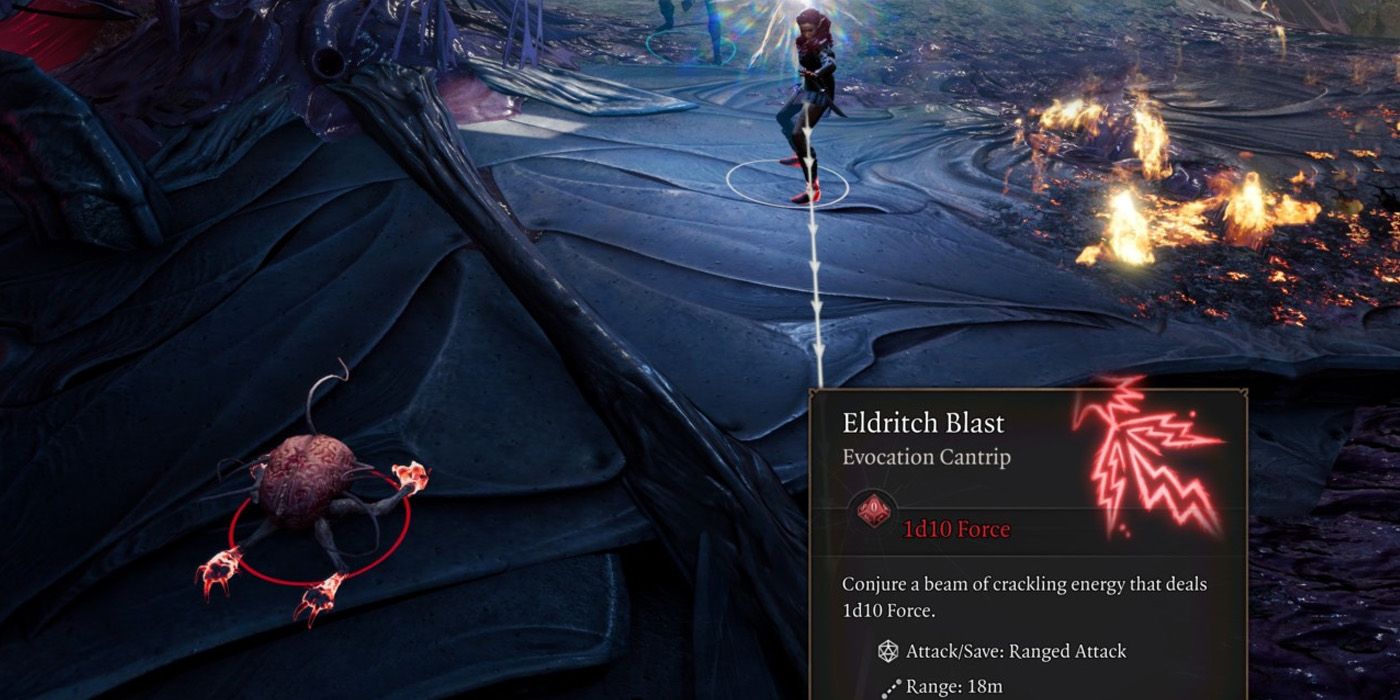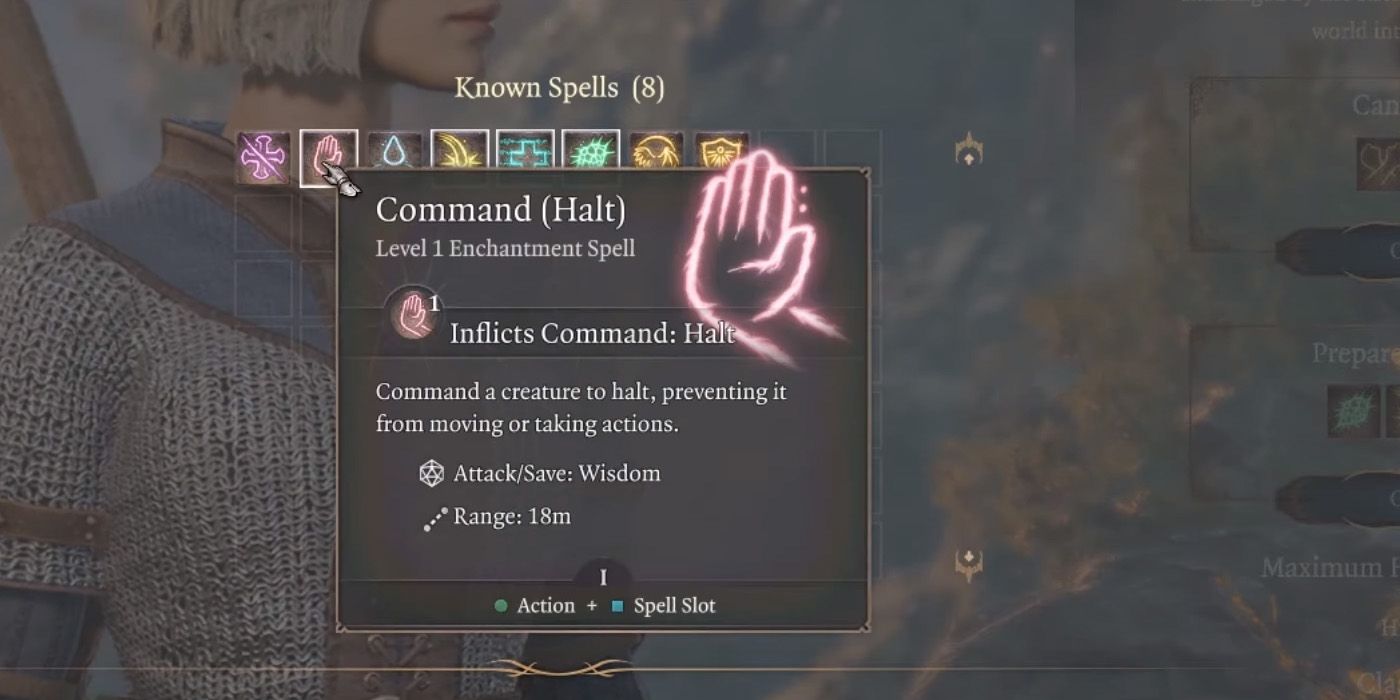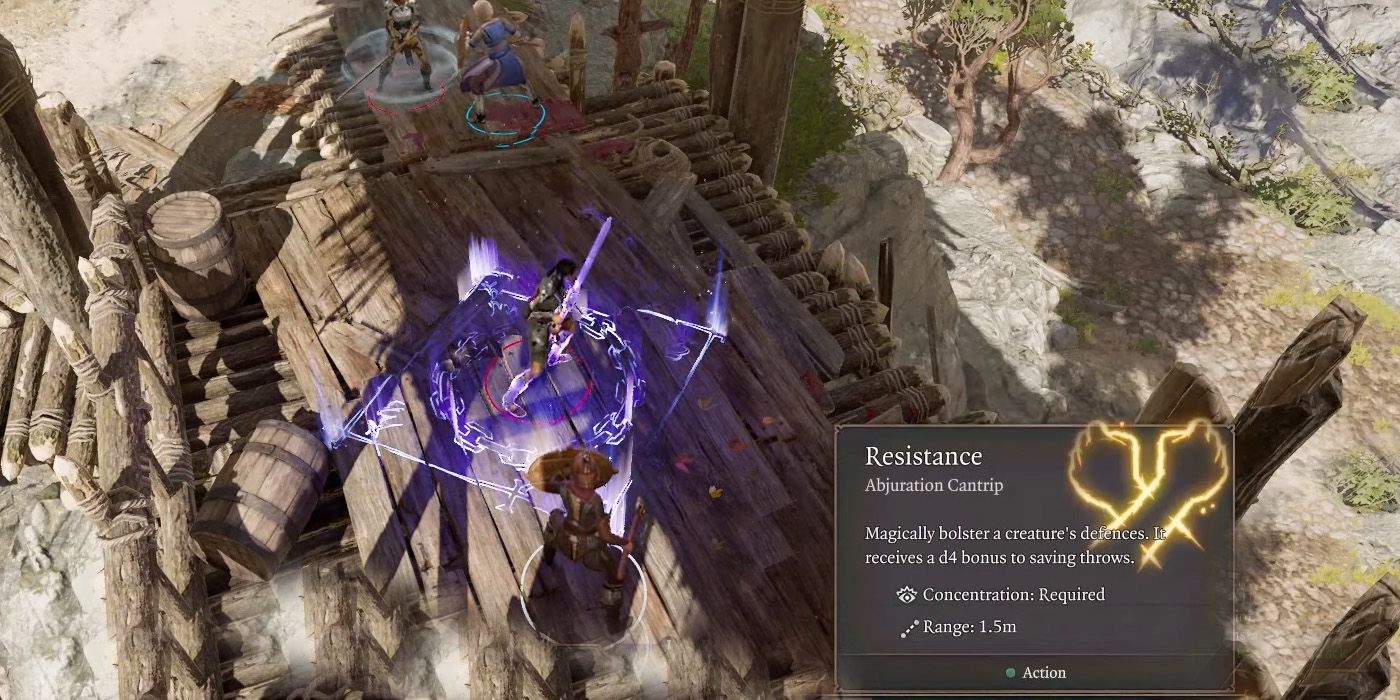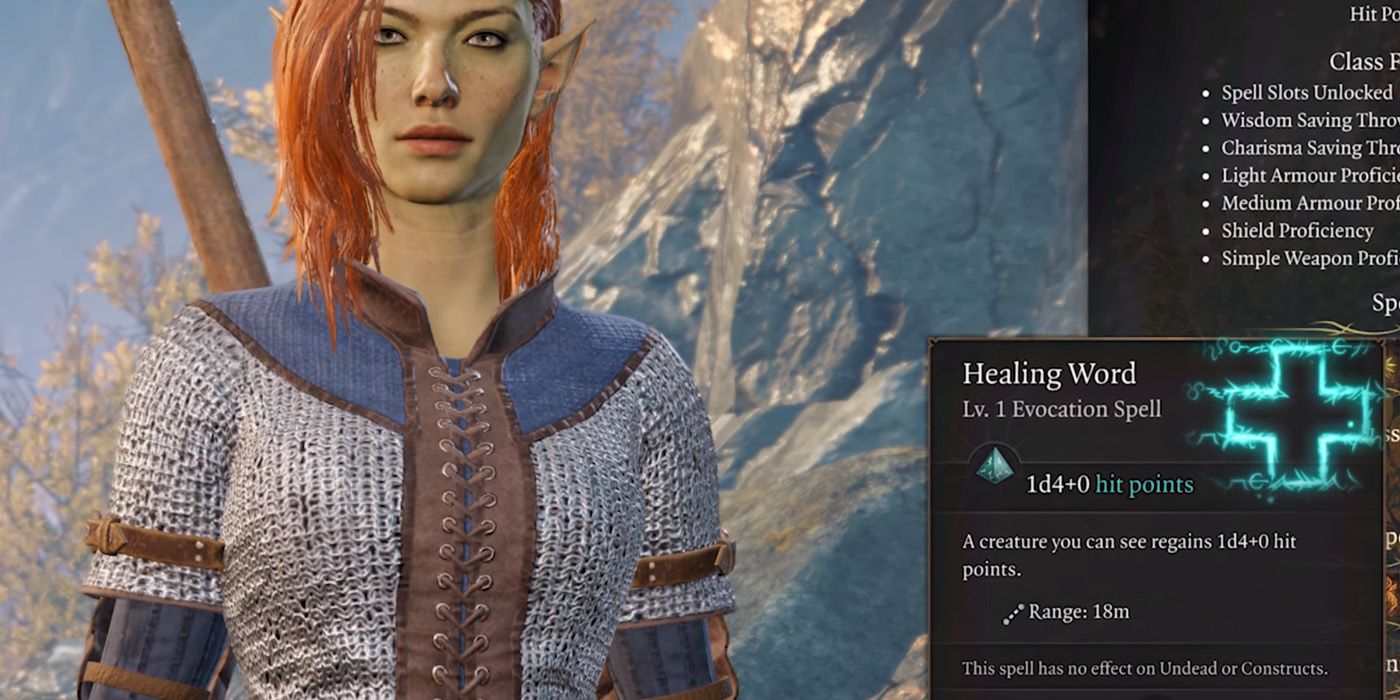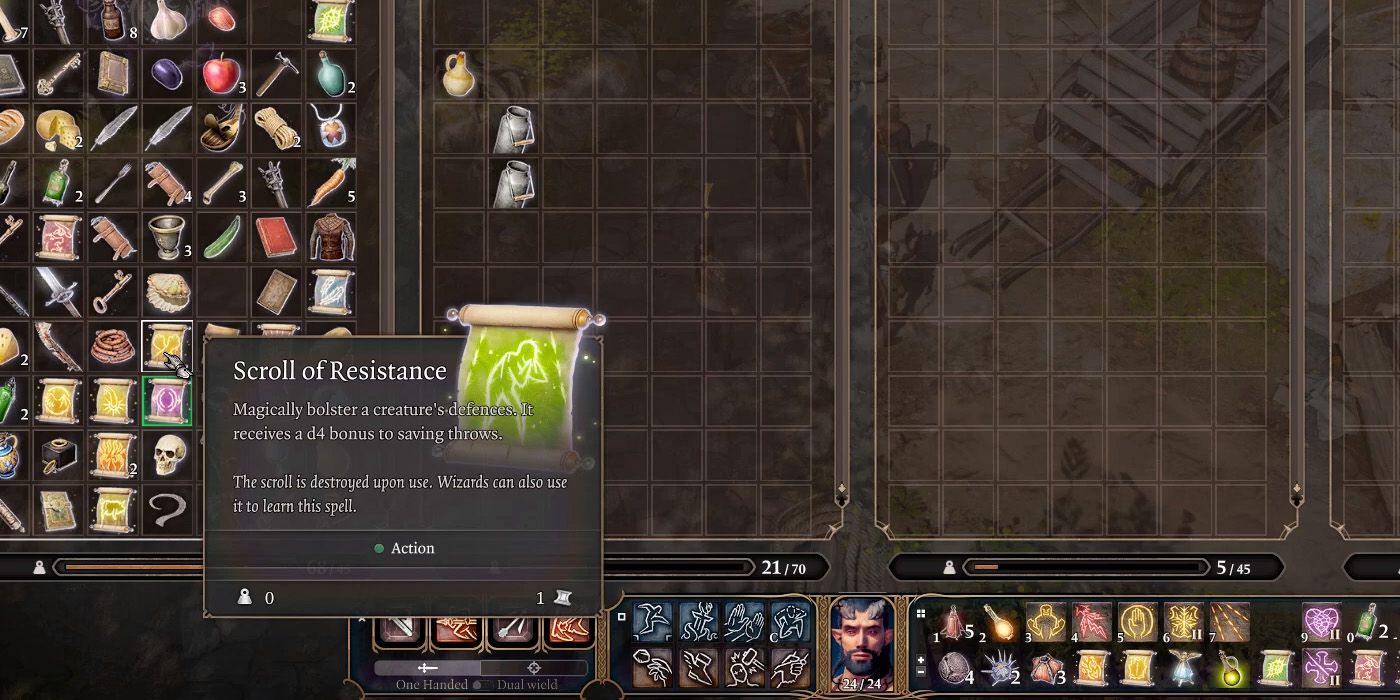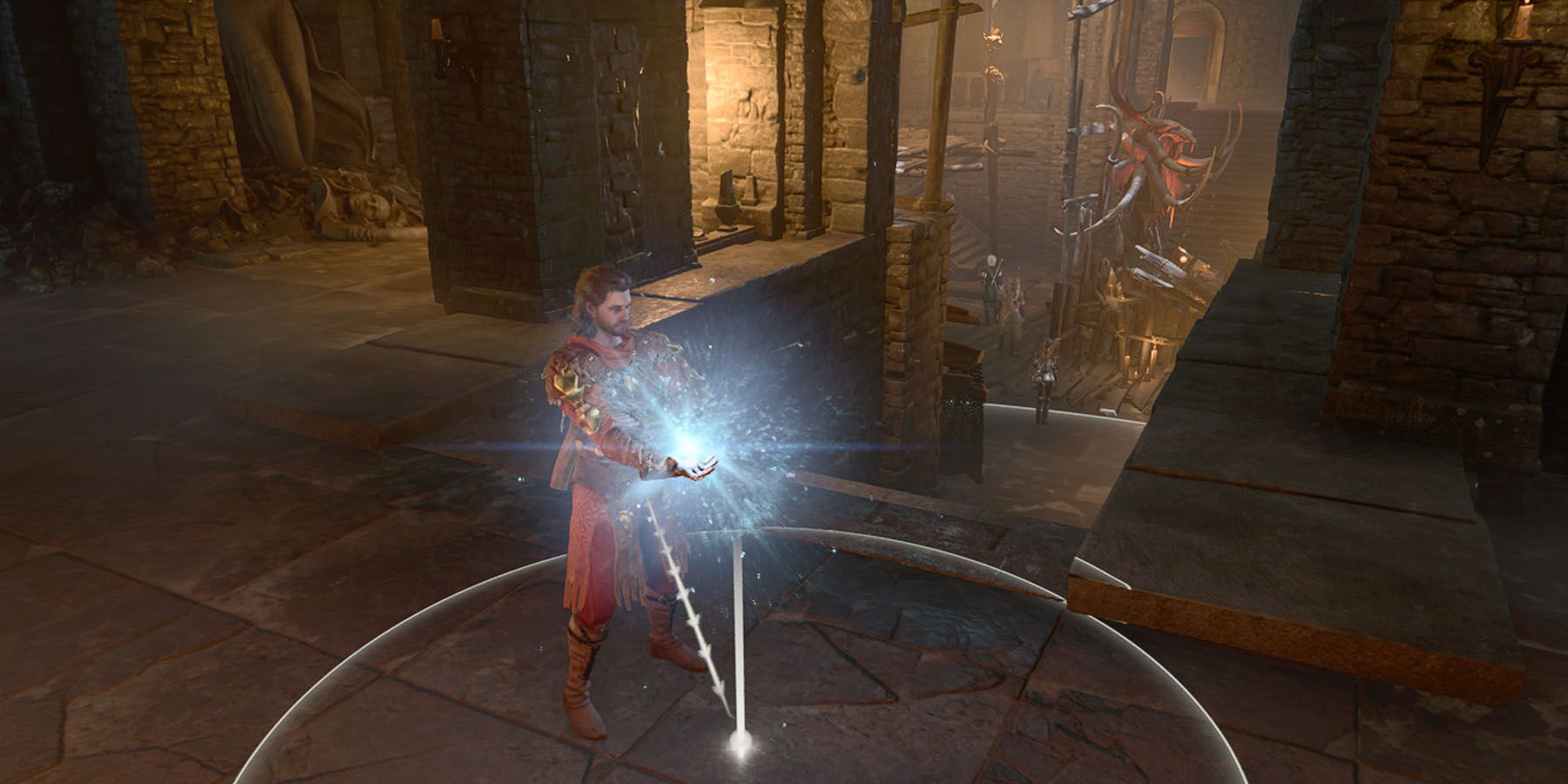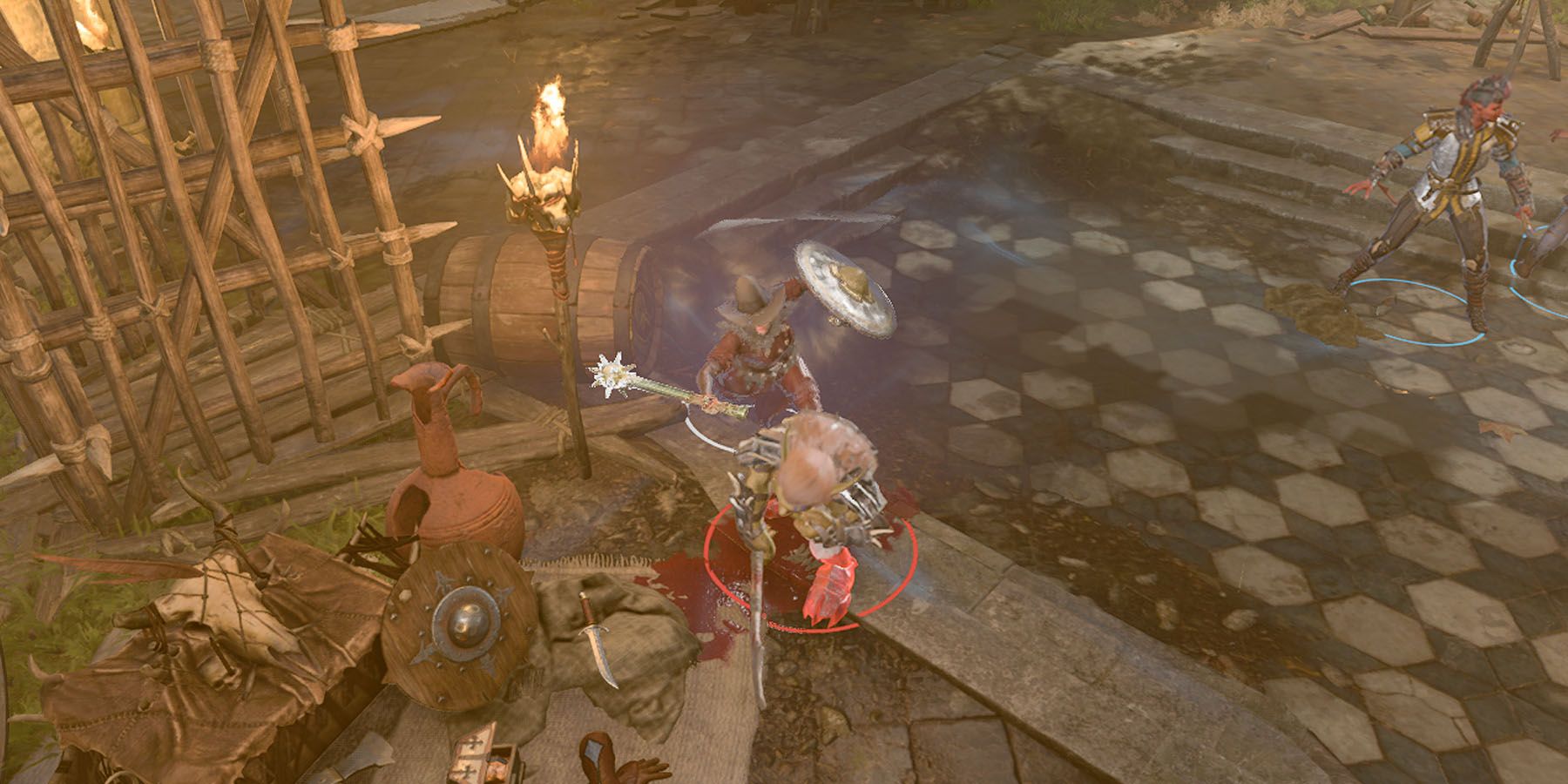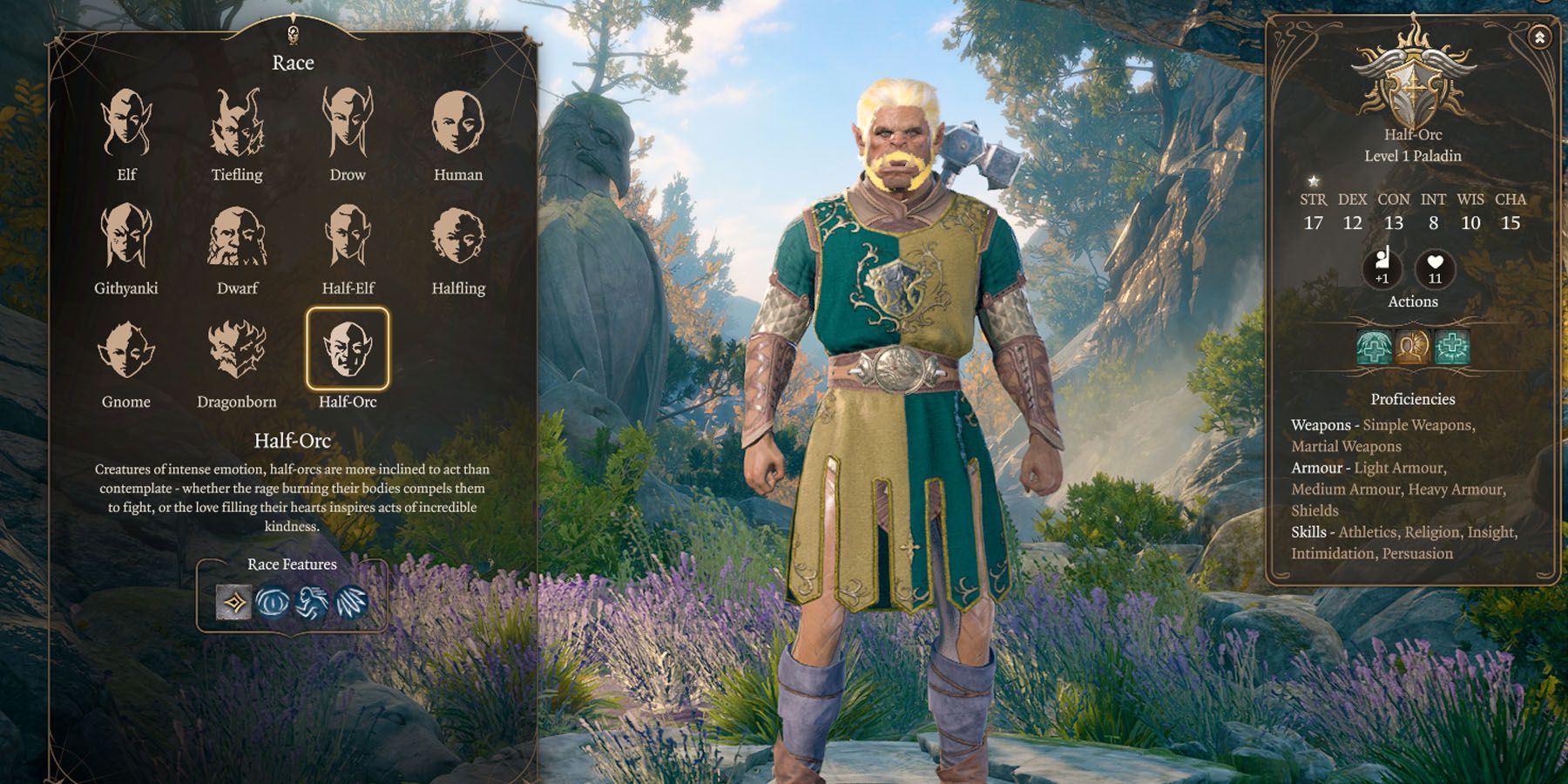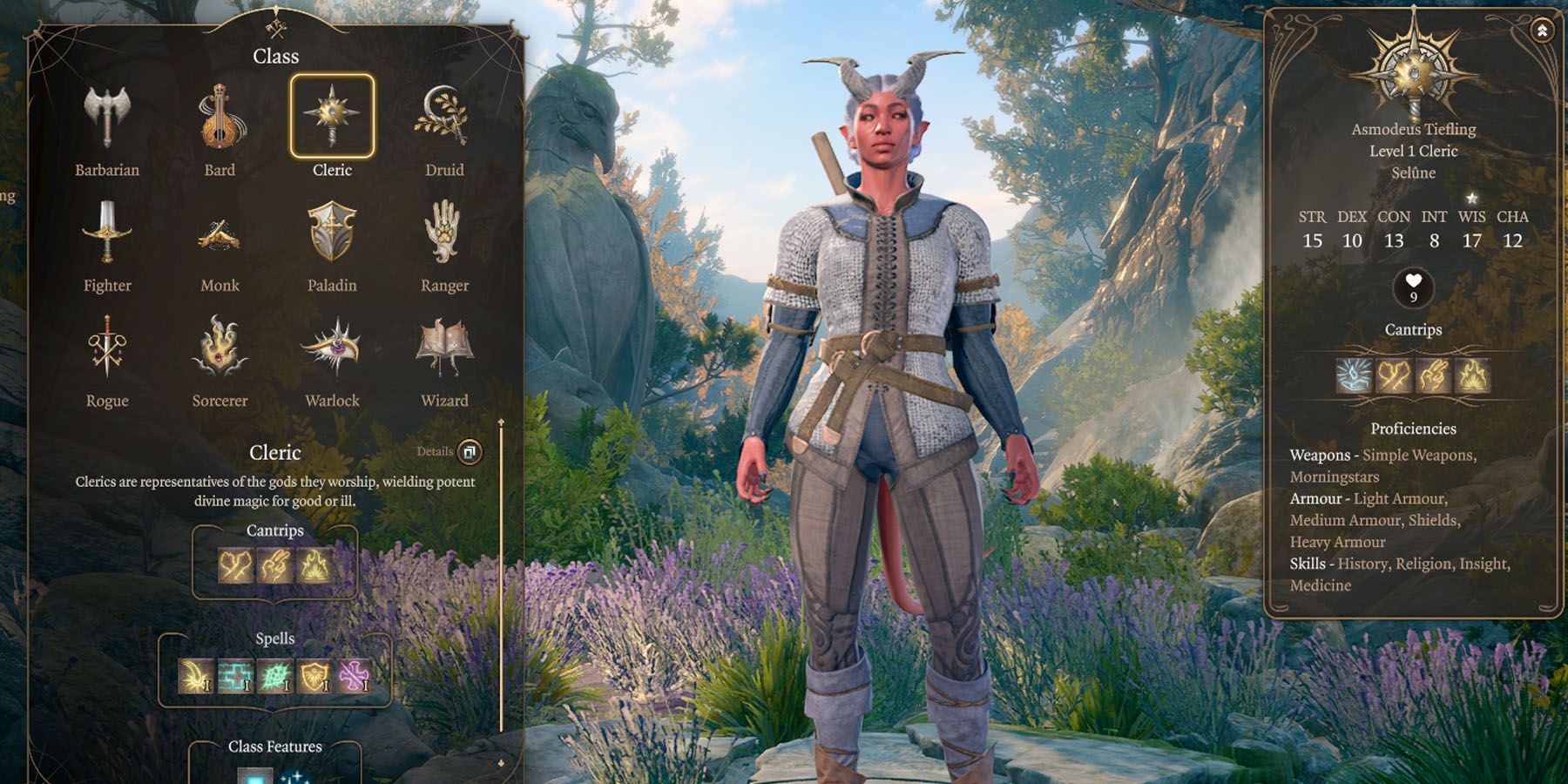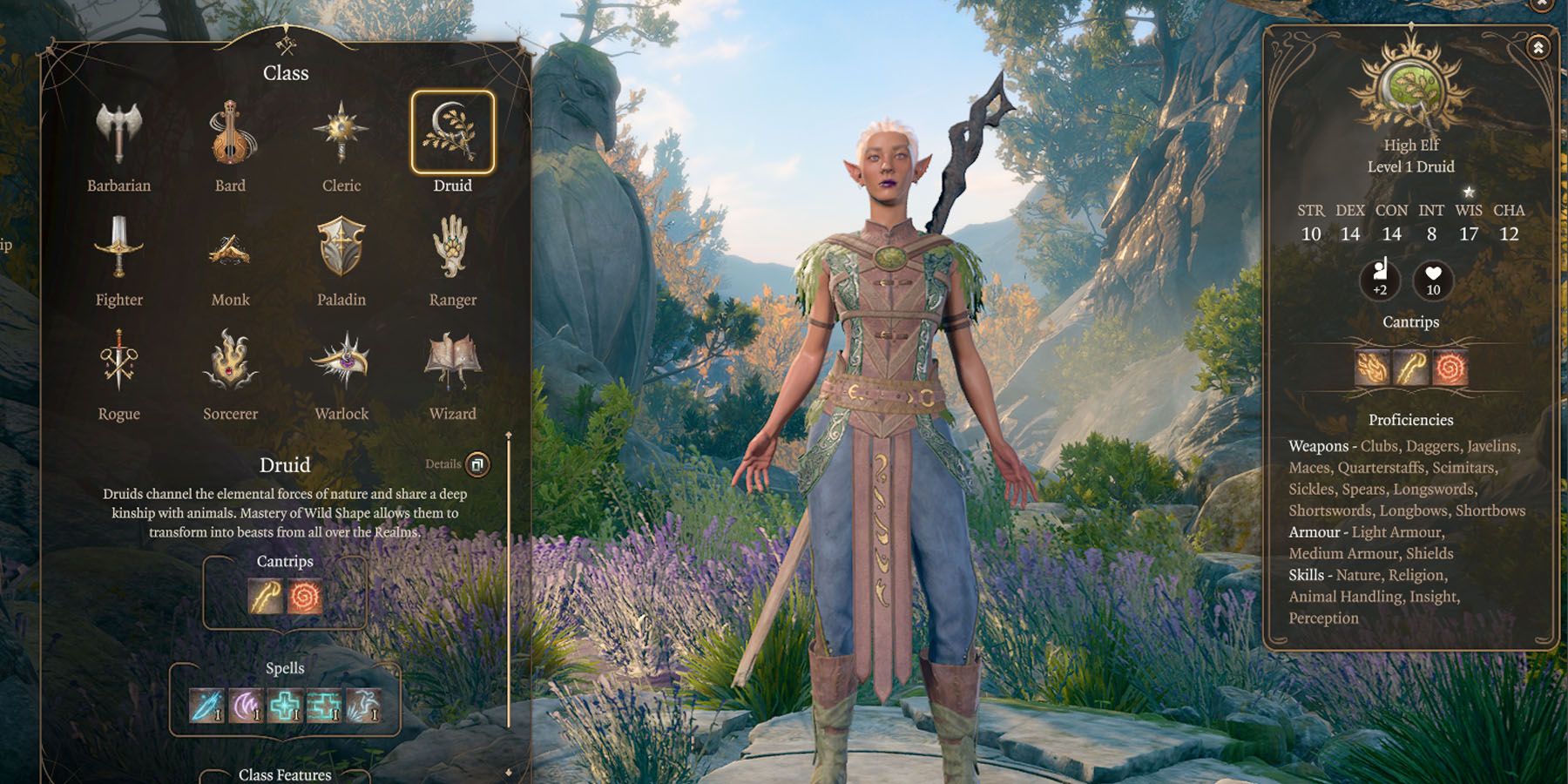Player tables always prioritize Healers in RPGs like Dungeons & Dragons 5e for a reason. After all, D&D 5e's tactical depth can make "ordinary" encounters wipe out unoptimized or underdeveloped party setups. As such, players of Baldur's Gate 3 will immediately see the repercussions of parties built willy-nilly without optimization into the mix. Moreover, parties lacking a healer can easily meet their doom within the first few rounds.
However, the wrong choice of healer can also lead to surprisingly mediocre performance when it comes to combat. Thankfully, players can tinker enough with BG3's characters to figure out just how to properly optimize a healer character to become the best in their role throughout the game. Here's how:
Updated on August 16, 2023, by Rhenn Taguiam: The Total Party Kill (TPK) remains a horrifying prospect for players about to embark on the complete Baldur’s Gate 3 experience, especially since the game’s launch puts players at the forefront of a Mindflayer invasion across Faerun. With players only having a single party of characters to control, assigning any one of their Companions as the obligatory healer can put a lot of pressure on them, especially in the game’s later stages. For healers who want to ensure their group isn’t subjected to a total party wipe, mid-game to late-game strategies include choosing a Paladin to accompany healing with fighting, going for the Cleric to maximize healing, and opting for a Druid for extra utility.
14 Heal Proactively
Healers will most likely start healing their allies as soon as they hit around 30 percent of their Hit Points. However, following this strategy will almost always spell certain doom. Remember, unlike other Spells, healing Spells in D&D always work - it's the amount of healing that may or may not work in their favor. Unfortunately, healing Spells will always heal less damage than what most attacks deal. Essentially, if a healer only heals by the time an enemy strike can potentially kill their ally, then they've doomed that ally.
Instead, healers should stay on top of the party's HP count. By the time an ally hits around 75 percent HP, healers should see if their ally needs healing, if they need buffs for their performance, or if they need debuffs for their enemies.
13 Maximize Action Economy
Thanks to BG3's action economy, all game actions get assigned as Actions, Bonus Actions, and Reactions. In turn, healers should be mindful of which abilities they use, especially since unused actions don't get carried over to the next turn. Ideally, healers should be capable of doing something beneficial or practical across all action types.
For instance, many practical Spells only cost Bonus Actions to use. These include Healing Word (1d4+Mod Healing) and Shield of Faith (+2 AC). This factor means healers can dedicate a Reaction to make an Opportunity Attack if an opponent comes near them. Likewise, they still have an Action they can use for a weapon attack or another Spell.
Additionally, most spammable Cantrips use Actions but don't cost Spell Slots. In turn, healers like Clerics should dedicate combat Spells such as the Sacred Flame (Evocation) Cantrip or useful Spells such as Resistance (Abjuration) and Guidance (Divination) for their Actions.
12 Enter Combat Last
Regardless of the build, the healer archetype will likely have the most healing and support Spells available at their disposal. Having them at the beginning of the battle will likely just attract enemy attention. In turn, it might be ideal for healers to enter combat last, or at least after the first round.
Theoretically, the first round should have enough details to give an accurate assessment of the combat encounter. For instance, healers know they need to prioritize healing if they see the Tank and DPS have a hard time fighting powerful NPCs. Likewise, a hard-hitting boss might need more debuffs. With this method, healers can even score a free hit via a Surprise Round before officially entering the initiative list.
11 Have A Dynamic Combat Role
Players with dedicated healers risk losing 25 percent of the potential damage they can deal against mobs and bosses. Instead of doing this, players should ensure their healer has a secondary role. That way, their healer can find better ways to contribute to the battle aside from healing, buffing, and debuffing.
For instance, Clerics can dip into the Weapon Master Feat to match their Shield with a more potent 1H-Weapon. Additionally, healers with decent Dexterity can use a Hand Crossbow for ranged damage aside from Cantrips. That way, healers can allocate Cantrips for utility Spells instead of attacks.
Likewise, healers can dip into Warlock via Magic Initiate to get the Eldritch Blast Cantrip. Aside from its 1d10 Force Damage, it's a ranged attack - meaning it relies on a simple attack roll. In turn, Eldritch Blast becomes far more useful as a Cantrip compared to Cleric staples such as Sacred Flame.
10 Ruin The Enemy's Day
Healers aren't just supposed to "heal" the party. Some of the most effective healers actually contribute towards their allies' performance - and part of this has to do with ruining the enemy's mojo. Thankfully, healing-oriented Classes like Clerics actually have debuffs.
For instance, Bane (Enchantment) imposes disadvantages on attacks and Saving Throws, while Command: Halt and the more powerful Hold Person (Enchantment) stop a creature from moving and taking action. Instead of healing, these Actions can give the party a free round of dishing out punishment that can essentially end combat.
9 Secure Wins With Buffs
Aside from healing, the most effective healers also "boost" their allies' performance through buffs. Sometimes, opting for buffs can give allies the push they need to end combat. Interestingly, buffing can come in many ways.
First, healers can enhance their allies' defenses via AC. Spells such as Shield of Faith and Mage Armor (+3 AC) can boost defenses high enough to force enemy attacks to miss. Meanwhile, Aid (Abjuration) actually heals 5 HP and adds a +5 Maximum HP for the duration.
Likewise, Resistance (+d4 to Saves) and Guidance (+d4 to Ability Check) can give a much-needed boost to checks.
8 Choose The Right Heals
One of the most important decisions healers need to make lies in choosing the right healing Spells. While these may be on a case-by-case basis, some of the most common healing Spells actually have "best times" of use.
For instance, while Healing Word heals for a measly d4, they come in handy as they only cost a Bonus Action and have range. This works best to heal recently-revived allies, as they will most likely consume a potion on their turn anyway.
Likewise, the more powerful Cure Wounds (Evocation) heals for a better d8 but costs an Action and needs melee range, which potentially wastes the healer's action options and leaves them vulnerable. Essentially, Cure Wounds works best on "essential" allies such as a versatile Ranger or a hardy Tank that need that emergency heal to fight a boss.
7 Stock Up On Potions, Scrolls
Instead of relying on Spell Slots to restore HP, healers should consider stockpiling Scrolls and Potions. On the one hand, Scrolls serve as a repository for various Spells that characters can use as a one-time tool. That way, they only spend an Action casting the Spell without using Spell Slots. Likewise, Potions grant effects once consumed or thrown to the ground.
Healing Potions and status removal effects can be life savers in unexpected situations. Meanwhile, Scrolls of Healing can definitely allow healers to conserve precious Spell Slots. Essentially, players can consider these consumables as powerful artifacts due to their usefulness.
6 Maximize Resting To Save Spells
Interestingly, different kinds of Rests recharge abilities differently. In turn, healers who heal after battle might leave themselves without Spell Slots. In turn, this caveat leaves them vulnerable in the next combat encounter.
Instead, the party should maximize. Using a Short Rest will restore health and certain abilities. However, players can only use one Short Rest before being required to do a Long Rest and end the day.
As such, healers should think about whether they can last in the encounter without using powerful healing Spells. That way, they can easily opt for a Short Rest and tread along. Moreover, players can capitalize on Waypoints around the map if they're exploring so they can periodically Long Rest without losing progress.
5 Establish A Routine
Just because a character is a designated healer doesn’t mean they have to stay behind and only function when it’s time to help someone else. Given the tactical versatility needed for a Baldur’s Gate 3 character, healers-to-be need to be more proactive in the way they support the rest of their teammates.
For instance, their Prepared Spells or other support abilities should be allocated not just for pure heals. Rather, the healer’s toolkit needs to be tailored to everyone else’s playstyle. For instance, a Rogue who depends on Sneak Attacks could use a healer Cleric who can impose Advantage on targets via Guiding Bolt. Likewise, a Wizard could use the +2 AC via Shield of Faith.
4 Secure Combat As Much As Healing
While the traditional healer in RPGs like Baldur’s Gate 3 usually focuses on pure support builds, the game only gives players control over four characters means everyone plays an important role in combat. Since an enemy with 1HP can still operate in the same manner as a full-health opponent, all player characters are expected to be able to attack any threat.
As much as a full-healing character has a slate of efficient healing spells, the game doesn’t offer enough actions for players to maximize these support abilities. In turn, healers can better protect their peers if they’re able to use damaging spells and attacks with armaments like Versatile Weapons to eliminate opponents before they become a threat.
3 Go Paladin For Sub-Tanking
Sometimes, the most efficient healing is the strongest defense - and what better way to secure the best heals in Baldur’s Gate 3 gameplay than ensuring allies don’t even need to waste resources to restore their Hit Points? This is where the Paladin comes in, as its nature as a more battle-hardened Cleric with fewer spells does compensate with an aggressive toolkit designed to outlast enemies while providing the occasional healing.
Players intent on having a Paladin as a tank should consider their ideal play style. Certain Paladin Oaths are designed more for defense (Protection), healing (Devotion), as well as aggression (Vengeance), further diversifying their holy knight’s combat role.
2 Rely On Cleric For Max Healing
The best healers in Baldur’s Gate 3 gameplay often take the form of powerhouses with the most access to healing abilities, something the Cleric boasts. When kitted properly, a Cleric like Shadowheart should be able to hold her own in combat while at the same time supporting her comrades with an array of buffs and heals, alongside the occasional offensive spell in case of emergencies.
Aside from their staple heals, the Cleric’s choice of Domain also expands their spell list to include many offensive and utility spells, transforming them into pseudo-Wizards focusing less on destruction and more on diversified support. Players should ideally choose the Light or Life Domain to focus on healing.
1 Choose Druid For Sub-Utility
Although their Wild Shape makes the Druids of D&D feel like “nature’s Clerics” at first glance, but these protectors can make the most versatile healers in the game. The Druid in Baldur’s Gate 3 gameplay still has Wild Shape as their trademark form, although their Subclasses dictate their secondary roles.
Despite having access to a standard array of healing and support spells, the Circle of the Moon further expands the Druid’s utility capabilities. They become more long-ranged defensive with the Circle of the Spores, while Circle of the X and their access to Combat Wild Shape encourage tanky up-close gameplay.
Baldur's Gate 3 is currently available on the PC.

